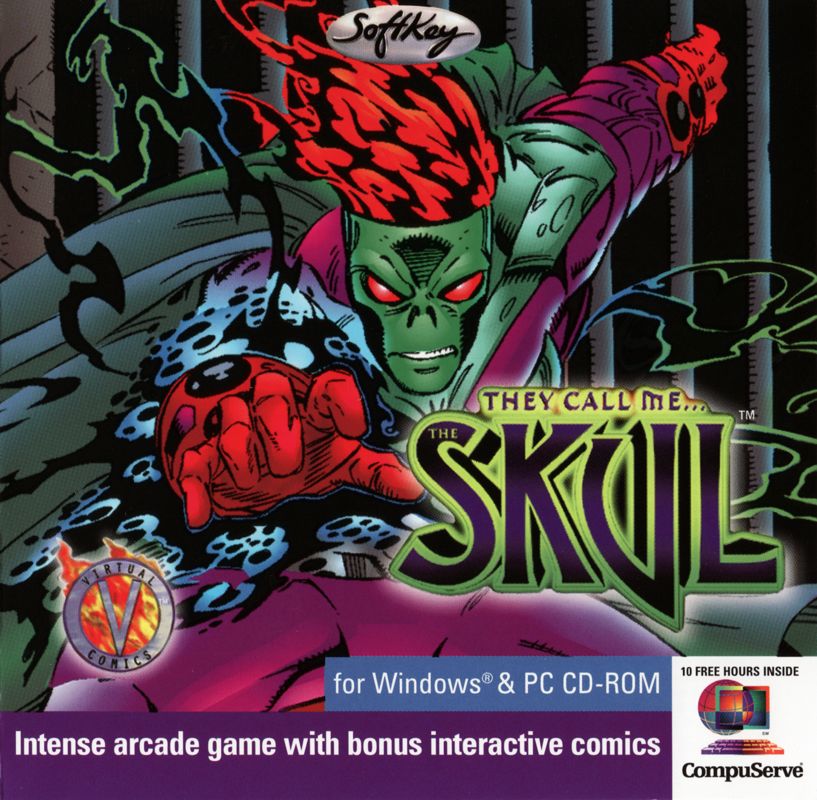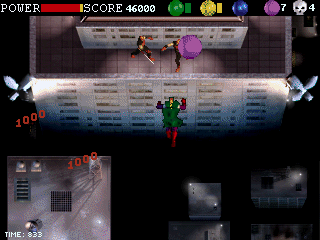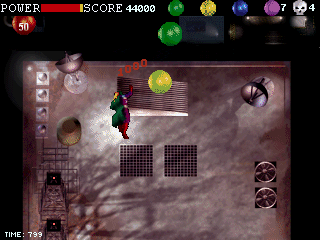Retro Replay Review
Gameplay
They Call Me… The Skul offers a unique blend of interactive comic reading and classic side-scrolling shooter action. Players flip through richly illustrated comic panels to follow Steve Kane’s transformation into the masked vigilante Skul, then seamlessly transition into high-octane aerial combat across urban rooftops. The controls are straightforward: use the arrow keys to maneuver Skul in midair and fire a steady stream of projectiles at the Power Elite gang members that swarm the skyline.
Central to the gameplay are the various power-ups scattered across each rooftop stage. Players can collect shield boosters to withstand enemy fire, rapid-fire modules to unleash a hail of shots, or multi-directional guns that allow Skul to attack in three separate arcs. Combining these power-ups adds a strategic layer, as timing and positioning become vital to maintain momentum through the endless onslaught of foes.
The stage design follows an infinite-loop format, meaning the action never truly ends. Each completed cycle ramps up the difficulty, spawning tougher enemies and faster projectiles. This scoring-driven approach encourages players to hone their reflexes and experiment with different power-up combinations, making each run feel fresh even after multiple sessions.
Graphics
Visually, They Call Me… The Skul captures the spirit of mid-’90s comic art with bold line work, dynamic angles, and vibrant color palettes. The comic reader segments showcase hand-drawn panels with expressive character poses, speech bubbles, and occasional animations such as flickering lights or subtle character movements. These touches heighten the sense of immersion, as if you’re literally reading a living comic book.
During the shooter sections, the pixel-based cityscapes unfold in parallax layers, giving a convincing illusion of depth as Skul soars from one rooftop to the next. Enemy sprites are well-defined, each member of the Power Elite gang sporting distinctive costumes and attack patterns. Background details—like flickering neon signs or distant helicopters—add atmosphere without overwhelming the main action.
While the graphical style feels dated by modern standards, it remains charming and functional. On a Windows 95 or MS-DOS system of the era, animations run smoothly and the vibrant hues pop nicely on CRT displays. On contemporary hardware you may notice blocky edges or limited resolution, but these quirks contribute to the title’s nostalgic appeal.
Story
The narrative thrust of They Call Me… The Skul revolves around Steve Kane’s wrongful conviction and incarceration at North Putnam Maximum Security Correction Facility. Rumors of clandestine experiments and enhanced inmates pervade the prison’s shadowy halls, setting the stage for an otherworldly origin story. The introduction captures this intrigue effectively, with atmospheric narration and moody artwork that draw players into Kane’s dire circumstances.
Steve’s fateful encounter with Big John serves as the emotional core of the tale. By saving Kane’s life, Big John inadvertently triggers latent superhuman abilities within him. This transformative moment is punctuated by panels depicting electricity crackling around Kane’s fists, symbolizing his rebirth as the vigilante Skul. Though the storyline sticks to familiar comic-book tropes—hero’s journey, wrongful conviction, underground conspiracy—it delivers them with enough flair to maintain interest.
Between gameplay sessions, brief text interludes and speech bubbles provide context for each rooftop mission. Villains taunt Skul from the rooftops, hinting at the broader machinations of the Power Elite gang. While the plot doesn’t branch or evolve dramatically, it offers just enough motivation to keep you engaged as you chase higher scores.
Overall Experience
They Call Me… The Skul occupies a niche spot in the mid-’90s multimedia landscape, merging digital comics with arcade-style shooting. For retro gaming enthusiasts and comic book fans alike, it provides a charming time capsule of early CD-ROM experimentation. The hybrid format might feel novel and refreshing for those accustomed to standalone shooters or static comic readers.
Repetitive by design, the core loop leans heavily on high-score chasing and power-up experimentation. Sessions can stretch on for hours if you’re determined to break personal records, but the lack of definitive levels or narrative progression may deter players seeking a more structured campaign. Casual gamers, however, will appreciate the pick-up-and-play feel and instant gratification each rooftop battle delivers.
Compatibility on period hardware is solid, with separate executables for MS-DOS and Windows 95, plus a user-friendly comic reader interface for Windows 3.x. If you’re hunting for a slice of gaming history or simply craving a retro shooter with a comic-book twist, They Call Me… The Skul remains an engaging curiosity worth adding to your collection.
 Retro Replay Retro Replay gaming reviews, news, emulation, geek stuff and more!
Retro Replay Retro Replay gaming reviews, news, emulation, geek stuff and more!









Reviews
There are no reviews yet.